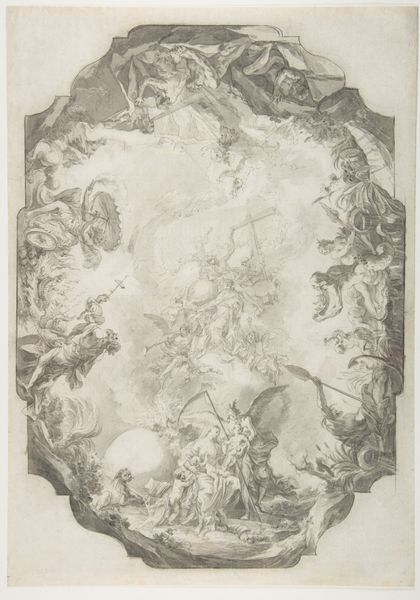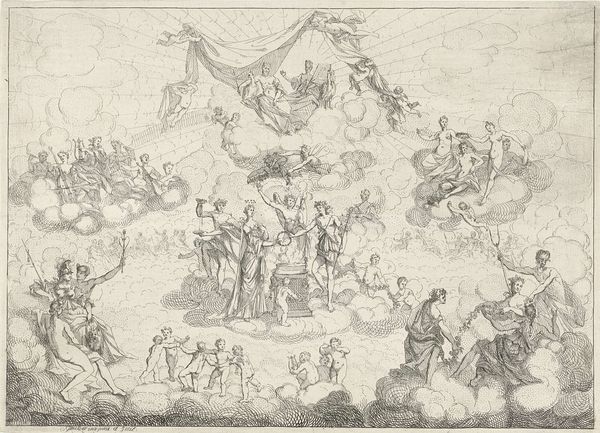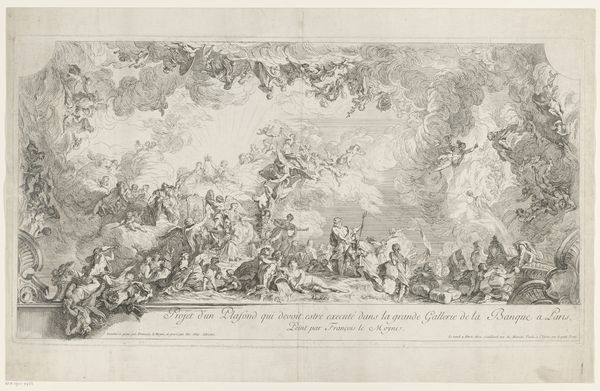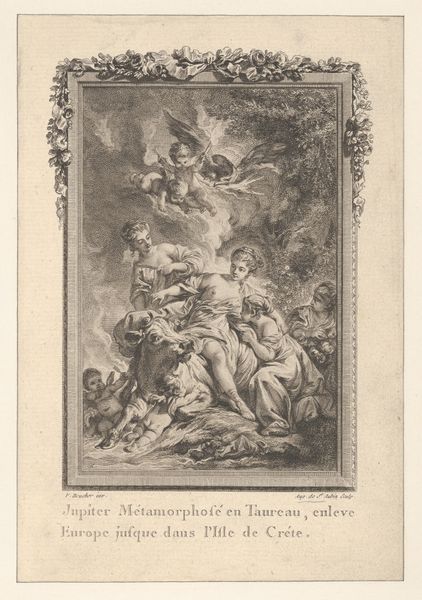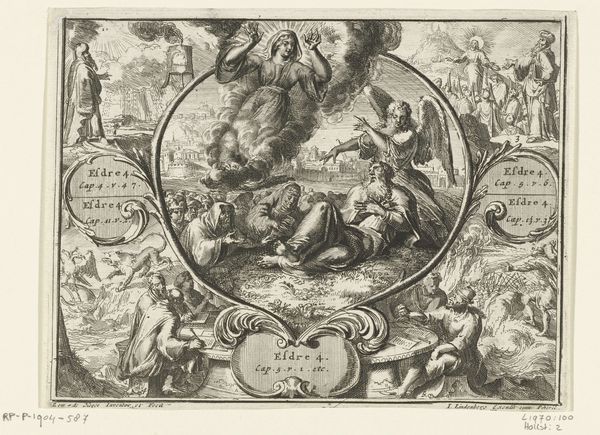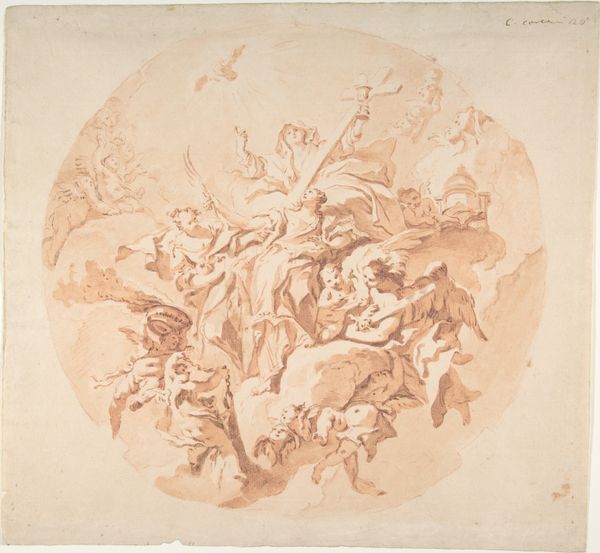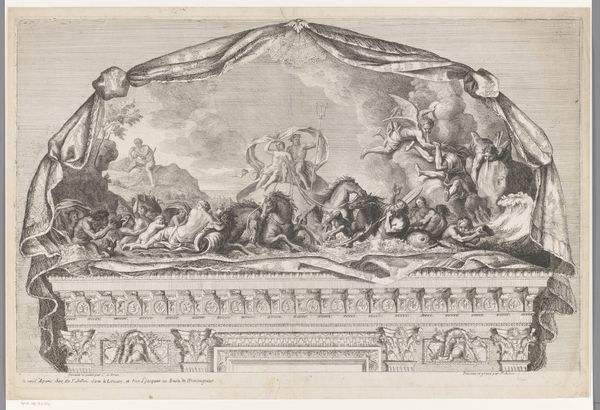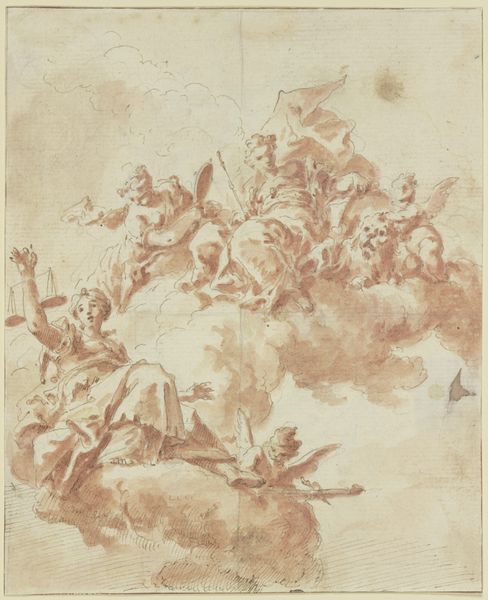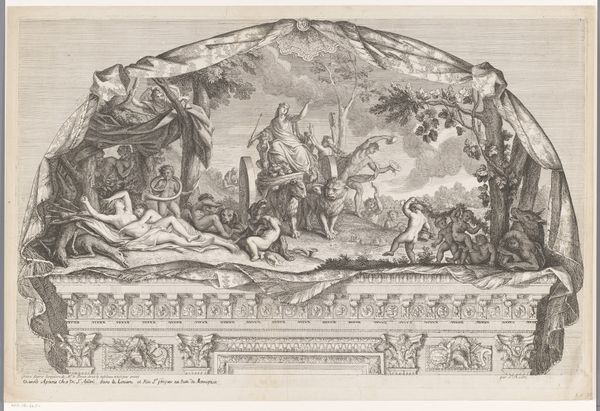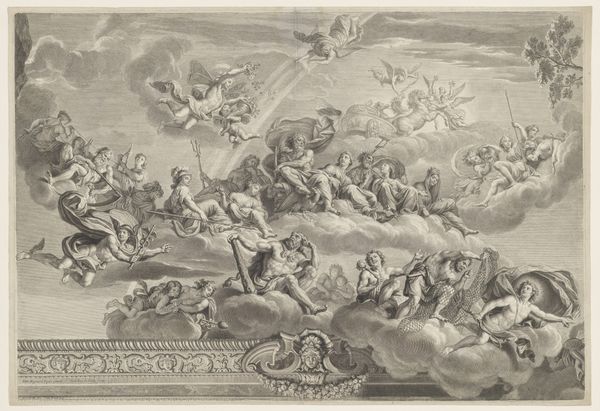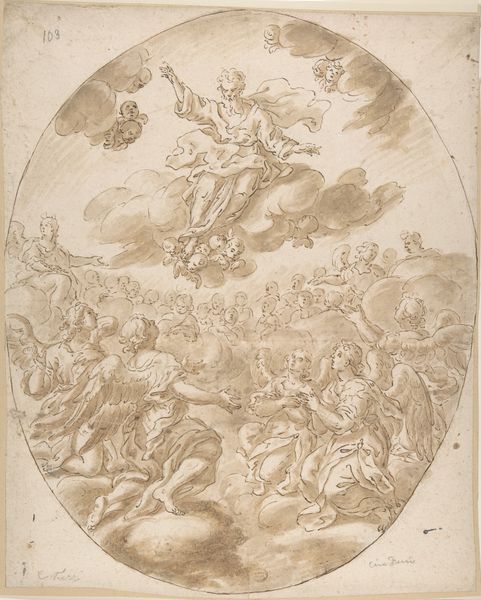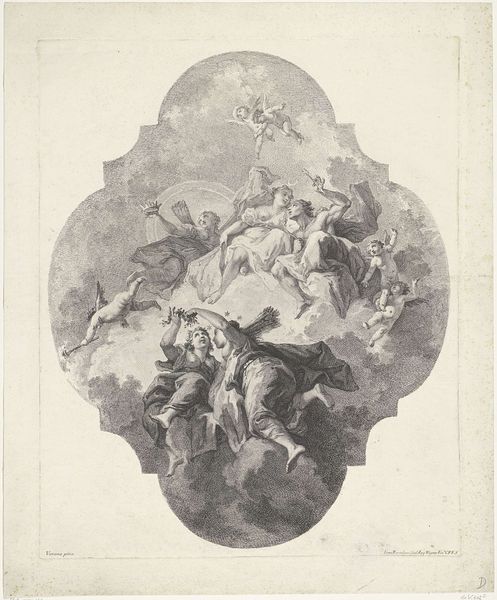
Veneration of the Eucharist by the Peoples of the World (Allegories of the Four Continents) 1720 - 1774
0:00
0:00
drawing, print, paper, watercolor, ink
#
drawing
#
water colours
#
allegory
#
baroque
# print
#
figuration
#
paper
#
watercolor
#
ink
#
history-painting
#
watercolor
Dimensions: 8 1/8 x 6 1/4 in. (20.6 x 15.9 cm)
Copyright: Public Domain
Editor: So, this drawing is entitled "Veneration of the Eucharist by the Peoples of the World (Allegories of the Four Continents)", dating from 1720-1774, by Gottfried Bernhard Goetz. It's a watercolor, ink and print on paper, currently held at the Metropolitan Museum of Art. It feels very dynamic, almost like figures swirling in the clouds. The monochrome palette also makes it look unfinished. What strikes you when you look at it? Curator: Immediately, the dynamism of the composition commands attention. Notice how Goetz employs a strong diagonal axis, drawing the eye upward from the densely populated base to the ethereal realm above. Consider the artist’s structural intention – to create a visual hierarchy that elevates the Eucharist. Editor: I see that! It almost looks like they’re being lifted, physically and spiritually. Curator: Precisely. The figures at the bottom, seemingly representing the four continents, are rendered with intricate detail, yet their gazes are directed upward, towards the light. Observe the use of line; how does Goetz use contour to define form and create a sense of movement? Editor: There’s definitely a sense of striving. I think the upward direction emphasizes the importance of what is at the top. Curator: Exactly! Furthermore, note the geometric grid underlying the composition. This suggests a calculated approach, a desire to impose order on the exuberant Baroque style. The use of grisaille reinforces a deliberate focus on form and light, reducing distractions from color. How do you see this grid influencing the image’s symbolic intent? Editor: Maybe it suggests that even with this heavenly veneration, there’s still structure and order in the world, like a divine plan underlying everything? It makes me think about how much intention goes into even seemingly spontaneous works. Curator: An astute observation. Ultimately, through careful analysis of composition, line, and underlying structure, we can start decoding Goetz’s symbolic language. Editor: I’ll definitely look at other Baroque works with a new perspective! It is useful to look at that geometric under-structure for a deeper meaning.
Comments
No comments
Be the first to comment and join the conversation on the ultimate creative platform.
